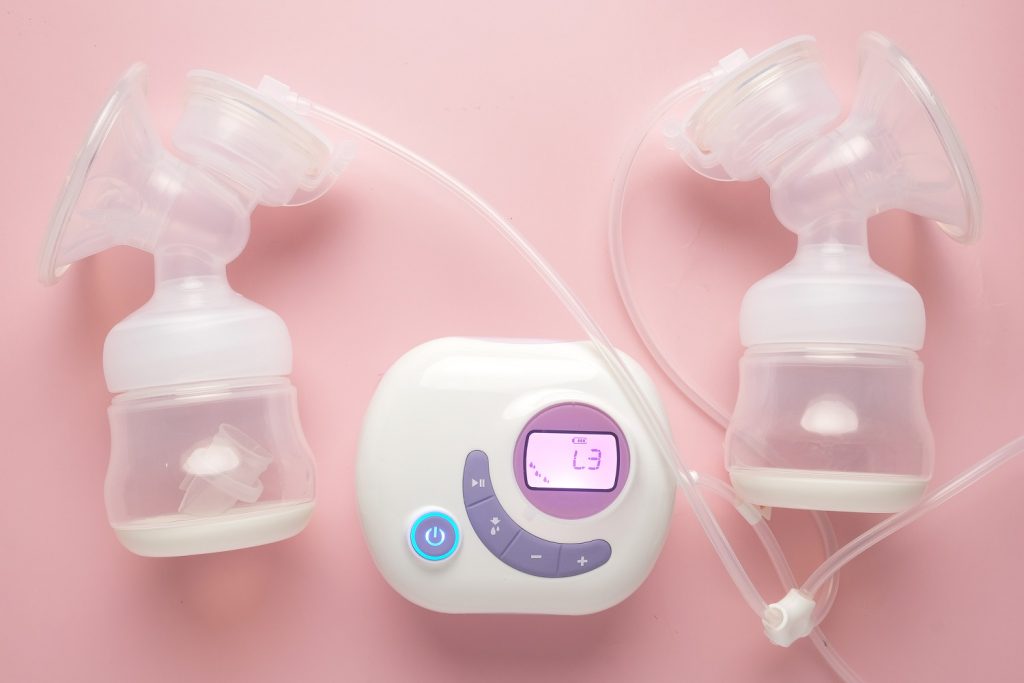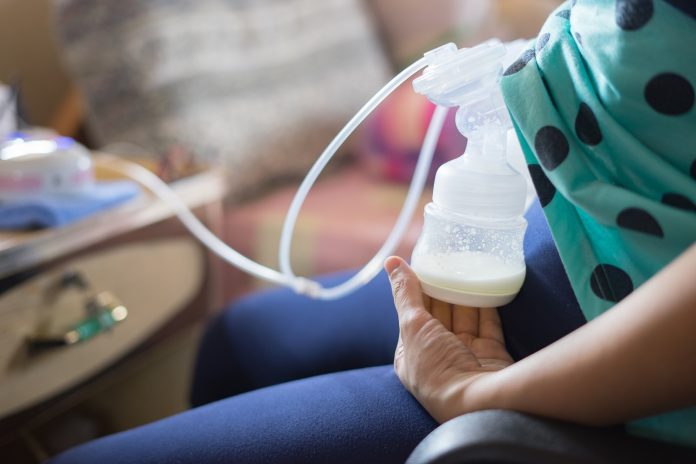Congratulations on your new bundle of joy! Are you feeling overwhelmed by the idea of pumping breast milk? I get it. When I first became a mom, the thought of pumping scared me too. But I’ll tell you what, it might just change your life. Not only does it give you the flexibility to be away from your baby, but it also provides your little one with the best nutrition.
In this article, I’ll be sharing some tips and tricks that I learned along the way to make pumping a successful and enjoyable experience for both you and your baby. It doesn’t matter how much milk you’re currently producing, these tips will all help. So let’s get started!
Top 4 Benefits of Pumping Breast Milk
Alright, so why should you consider pumping breast milk? Well, there are a few great benefits!
1. Added Flexibility
First of all, pumping allows you more flexibility in your breastfeeding schedule. Maybe you’re going back to work, or you have a busy day planned and won’t be able to be with your baby as much.
2. Aid in Milk Supply
You can help your body produce more breast milk by pumping. When you pump, you’re telling your body to produce more milk, which can be especially helpful if you’re struggling with a low milk supply.
3. Backup Supply
Another benefit of pumping is that it provides a backup supply of milk. You can use this to pump extra milk if you’re going on vacation or your baby is in the NICU and needs to be fed.
4. Maintain Lactation
Lastly, pumping can also help you maintain lactation when returning to work. As you can see, there are a lot of good reasons to pump breast milk. It’s a great way to ensure that your baby is getting the nutrition they need, even when you’re not around.

Getting Started With Pumping Breast Milk
Alright, now that you know why pumping breast milk can be beneficial, let’s talk about how to get started.
Choosing the Right Pump
It’s easy to say you should choose a pump based on your lifestyle, budget and preferences, but that can be hard with so many to choose from. We’ve reviewed some of the best-known models including the Spectra S1, the Baby Buddha, and the Motif Luna but we’ve also written guides to help you choose by your preference – for example, a portable travel pump or a hands-free pump.
Take a look at our guide to the top 10 breast pumps available now.
Types of Pump
There are a few different types of breast pumps available, each with its own set of pros and cons.
- Manual Pumps: Manual pumps are small and portable, making them a great option for moms on the go. They are also more affordable than an electric breast pump. However, they can be tiring to use, as you’ll need to manually pump the milk out.
- Rechargeable Electric Pumps: Electric breast pumps, on the other hand, are usually faster and more efficient than manual pumps. They can be found in either a single or double configuration. While both breasts can be collected using a double electric breast pump, milk from only one breast is collected using a single pump. In cases where you need to pump several times daily, this can be a huge time saver.
- Hands-free Pumps: These give you back freedom to move (or nap) and are a great way to carry on with jobs whilst you pump.
- Portable Breast Pumps: Designed to be light enough to carry with you, so you can pump at work or when visiting friends and family. (We’ve an article on air travel with a breast pump here.)
- Hospital-Grade Pumps: Another type of pump is a Hospital-grade pump intended for multiple users, usually found in office lactation rooms or hospitals. They are more heavy-duty and designed for frequent use.
You should select a pump model based on how well it meets your requirements. If you’re planning to pump often and for extended periods, an electric pump might be the better choice. But, if you’re only planning to pump occasionally, a manual pump might be more cost-effective.
What Should I Consider When Selecting Breast Pumps
When choosing a pump, consider your pumping schedule, portability, budget, number of users, and any additional features you might need. Electric breast pumps are efficient but manual pumps are portable and affordable. Also, think about whether it’s for personal use or multiple users. And read our guide to the top 10 pumps or pumps that work for travel.
Preparing to Pump
Before you start pumping, there are a few things you’ll need to do to get ready.
First, you’ll want to make sure you have all the pump parts you need, this includes your pump, bottles, and any other accessories that come with it.
Ensure your milk and your baby are safe by cleaning and sterilizing all equipment according to the manufacturer’s instructions before each pumping session.
Assemble a peaceful and cozy spot to pump in. Having a pleasant view, a soft chair, and a warm blanket will help you unwind. You can even have your favorite music or a book to keep you company while you pump.
Stick to a routine. Having a snack or drink nearby is also helpful, as is having a plan for what to do with the milk after pumping. Milk flow slows when stressed. This way you’ll be more organized and less stressed about pumping.
Cleaning and Sterilizing Equipment
Properly cleaning and sterilizing your breast pump supplies is important to keep them in good working condition and to protect your baby from any potentially harmful bacteria.
Step 1. Disassemble the Breast Pump
First, you’ll want to disassemble all the parts of your pump and wash them with warm, soapy water. Do not forget to scrub the tubing along with the other crevices. Rinse everything thoroughly and dry it off.
Step 2. Sterilize Your Tools
Next, you’ll want to sterilize your equipment. You can do this by boiling the parts for 5-10 minutes, or by using a steam sterilizer. You can also use a microwave sterilizer bag or a UV sterilizer for convenience.
It’s important to note that some parts of the pump, such as the tubing or certain types of valves, may not be able to be sterilized and should be replaced according to the manufacturer’s instructions.
Do I Need to Establish a Routine for Pumping Breast Milk?
No, but establishing a routine for pumping baby breast milk can help regulate your milk supply, make pumping feel more manageable, and ensure that your baby has enough milk while you’re away. Schedule your pump sessions around your baby’s feeding schedule.
Scheduling your pump sessions at the same time every day can help make your pumping sessions more successful. First, try to pump at the same time every day, ideally, around the same time your baby would be breastfeeding. This can help to keep your milk supply steady.
To maintain your milk supply, begin pumping every 2-3 hours during the day to mimic your baby’s feeding schedule. Pump sessions should also be scheduled around your work schedule if you’re returning to work. Set a session for when you usually have enough time. Be sure you have enough time to pump and store the milk.
Top 4 Tips for Successful Breast Milk Pumping
Here are a few tips to help make your pumping sessions more successful:
- First, try to relax and take deep breaths before you start pumping. This can help to stimulate your flow.
- Next, use a hands-free pumping bra, it can help you to feel more comfortable and free to move around while pumping.
- Try massaging your breasts or gently rolling your nipples before you start pumping. This can help to encourage milk flow.
- Lastly, listen to music or an audiobook, or watch a movie or TV show while pumping to help pass the time and make the experience more enjoyable.
Storing and Handling Breast Milk
To properly store and handle breast milk, use clean, airtight containers and refrigerate or freeze as soon as possible. Label it with the date, thaw and warm it properly, and discard it if it has a sour smell or looks lumpy or clumpy (read our guide to storing and warming breast milk).
Proper Storage Techniques for Breast Milk
Here are a few things to keep in mind regarding the proper storage of your breast milk for the best quality:
- Practice exclusively with clean, airtight containers such as bottles or storage bags to store your milk.
- After pumping, store your milk in the refrigerator as soon as possible. Freshly pumped milk can be stored in the refrigerator for up to 5 days, and in the freezer for up to 6 months.
- Label your breast milk with the date that it was pumped, so you can use the oldest milk first.
- To facilitate prompt thawing and use, freeze the milk in manageable portions.
Refrigeration and Freezing Guidelines for Pumped Breast Milk
Your breast milk should be properly refrigerated and frozen to ensure that it is of the best quality for your baby. Freshly expressed milk has a five-day shelf life in the fridge.
In the freezer, breast milk can last for up to 6 months, but aim to use it within the first 3-4 months. Leave some space at the top of the container when freezing milk and thaw it in the refrigerator overnight or under cool running water.
Thawing and Warming Breast Milk
Thawing and warming breast milk involves placing it in the refrigerator overnight or under cool running water, warming it using a bowl of warm water or a bottle warmer, testing the temperature before giving it to your baby, and read how long it lasts after warming.
How to Tell if Breast Milk Is No Longer Safe to Use
If the milk has a sour smell, looks lumpy or clumpy, has been stored for more than 5 days in the refrigerator or 6 months in the freezer, has been thawed and not used within 24 hours, or left out of the refrigerator for more than 2 hours, discard it.
Conclusion
Pumping breast milk provides your baby with excellent nutrition while giving you flexibility, and increased breast milk production. Choosing the right pump, preparing yourself, establishing a routine, and properly storing and handling the milk is important for success. Seek support if needed and enjoy the experience.

